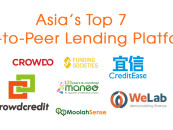Kickstarter campaign creators should take note: The community does not view claims of product novelty and product usefulness as congruent.
While the total amount pledged is boosted when a product is said to be useful (or alternatively, novel), claiming that it is both reduces the total amount pledged by 26 percent.
That’s according to a recent big-data analysis of 50,310 Kickstarter projects, led by researchers from the Singapore Management University, HEC Paris, the University of Technology Sydney and INSEAD.
Amitava Chattopadhyay
“Prior research has shown that products that are novel and useful typically succeed in the marketplace,”
said study co-author Amitava Chattopadhyay, Professor of Marketing and the GlaxoSmithKline Chaired Professor of Corporate Innovation at INSEAD.
“But when projects make both claims, backers either assume a product’s benefits are inflated, that it carries a high risk of failure or that it divides the crowd between believers and sceptics, making it hard for backers to pick a side.”
“The higher level of uncertainty in the crowdfunding context drives backers to choose modest innovations and shy away from more extreme innovations,”
said Cathy Yang, Assistant Professor of Marketing at HEC Paris.
“This is deeply disappointing as the premise of crowd funding is to support creativity and innovation”,
said Anirban Mukherjee, Assistant Professor of Marketing at Singapore Management University.
Kickstarter is often seen as a haven for innovators as it allows them to circumvent hard- nosed bankers and other risk-averse traditional lenders. But innovation can be a hard sell with the crowd, as explained in the research paper titled “Does the Crowd Support Innovation? Innovation Claims and Success on Kickstarter”, co-authored by Mukherjee at SMU, Yang at HEC Paris, Xiao at UTS and Chattopadhyay at INSEAD.
Results born of big data Chattopadhyay and his study co-authors accessed a dataset comprising all the projects listed on Kickstarter since its launch in 2009.
To focus on the crowd’s appetite for innovation, they eliminated arts-related projects as these tend to be evaluated mostly on the basis of their artistic value. They then kept all the U.S-based projects that fell in the nine largest remaining Kickstarter product categories.
Results born of big data
Chattopadhyay and his study co-authors accessed a dataset comprising all the projects listed on Kickstarter since its launch in 2009. To focus on the crowd’s appetite for innovation, they eliminated arts-related projects as these tend to be evaluated mostly on the basis of their artistic value. They then kept all the U.S-based projects that fell in the nine largest remaining Kickstarter product categories.
The final dataset included a total of 50,310 projects. State-of- the-art machine-learning tools were used to extract a list of descriptors from the text, lead image and video of each project. The number of occurrences of the word “novel” and its synonyms served as a proxy for novelty claims. Conversely, the sum of occurrences of the word “useful” and its synonyms became the measure for claimed usefulness. These numbers were then compared with the individual projects’ funding results.
Implications for crowdfunders
The data show that claims of novelty and usefulness, taken separately, do increase the total pledge amount. As a matter of fact, they have a very large initial effect. A single claim of novelty increases project funding by about 200 percent, while a single claim of usefulness leads to an increase of about 1200 percent, as compared to projects devoid of any such claim.
“As opposed to the regular marketplace, where buyers feel protected by consumer laws, crowdfunding backers may face a very high level of uncertainty”
said Chattopadhyay. After all, the developers may fail to come up with the final product, or they may need to change specifications along the way. It’s been shown that consumers prefer more traditional products when their perception of risk is high. Inventors that claim that their product is very innovative, i.e. both highly useful and novel, may find it more difficult to get funded because of a higher risk perception by the crowd.
Featured image via Kickstarter Facebook page









